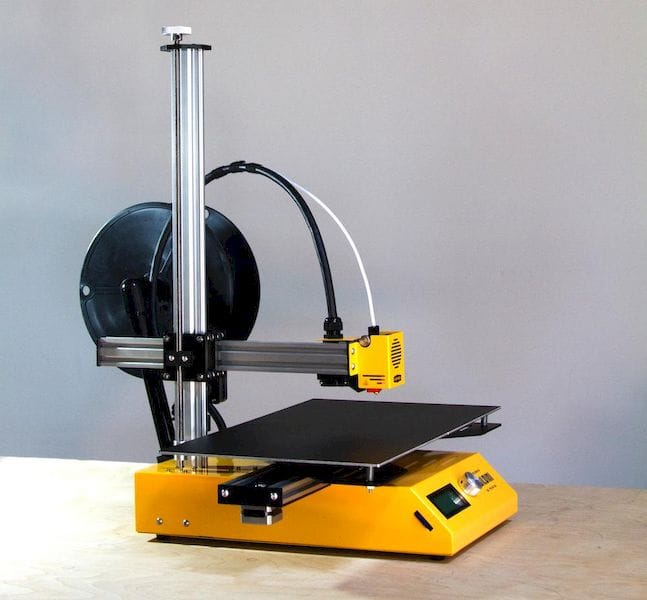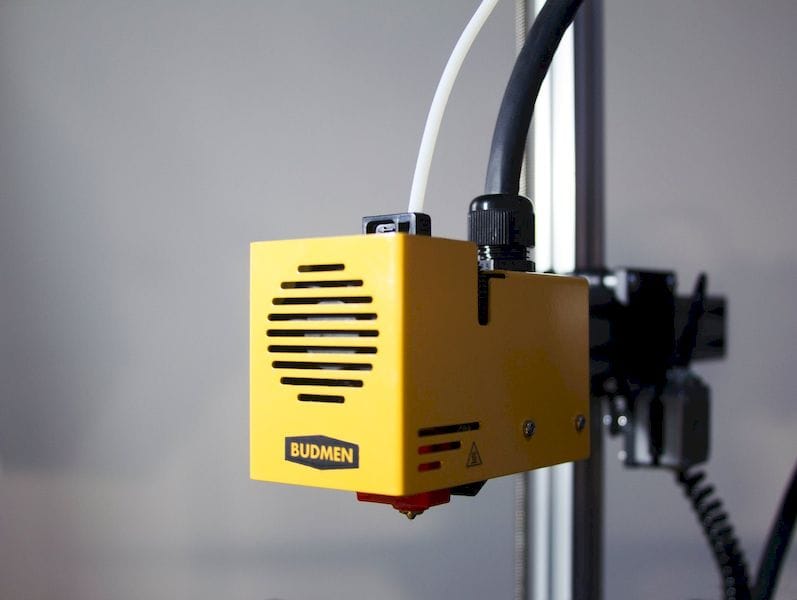
We’ve been tipped on a potentially interesting new 3D printer, the Buildini, by Budmen Industries.
It’s likely you have not heard of this small company, but it describes itself as a “postdigital workshop”, producing everything from “technology to art”.
What does that mean? If you examine their website you’ll find a number of interesting 3D printed products available, like the fascinating Pulse Table:

This item is a coffee table, but with legs that were inspired by a heartbeat electrocardiogram. The largish legs were 3D printed on a custom 3D printer produced by the company so that they could make items like the Pulse Table.
And that’s the connection here: this company has been building (through 3D printing) a number of unusual products, and through that experience they’ve had to develop unusual custom 3D printers.
But now they’ve taken another step and decided to market the custom printers they’ve been making to the public.
One of them is the Buildini, which is a desktop 3D printer, but with a rather large build volume of 500 x 300 x 490mm. As you might imagine, the device is designed to 3D print larger items along the same lines as the Pulse Table components. To that end, the machine includes a larger-than-standard nozzle at 0.6mm for faster – but coarser – 3D prints.

The Buildini is suitable for 3D printing a wide variety of standard 3D printer filaments, including: PLA, PETG, TPE, TPU, Carbon Fiber Filled PLA, Wood Filled PLA, Metal Filled PLA, and I suppose others as well.
Isaac Budman explains the philosophy of the device’s design:
We first built the Buildini as a reliable, large format 3D printer for our use here in the workshop. Within the walls of Budmen Industries, experimentation is the name of the game. It’s not uncommon to find a paste printhead 3D printing pastry on one machine while another whirls away 3D printing tests on fabric swatches. Needless to say, this sort of constant experimentation can be very demanding on a 3D printer.
Our objective was to build a 3D printer that could meet the demands of experimental tool heads, substrates and materials, print big beautiful objects, and would make maintenance easy and fast.
We started from the ground up with the essential functions of a 3D printer, challenging the industry’s traditional ideas and construction techniques. We obsessively pushed for a simpler, more reliable machine. Thousands of hours of experimentation and refinement resulted in a 3D printer that is minimal, modular, and maintainable.
Thus we have a 3D printer that is literally designed for experimentation. You can easily swap in additional components or test out unusual materials, even at large scales.
This device is certainly not for everyone; it would best be for those tinkerers wishing to do this type of experimentation.
The price of the Buildini is USD$2,300, with a USD$100 reservation deposit required upon order. The company expects to ship the machine to buyers on or about the September timeframe. Unfortunately, they will be shipping machines only to the USA at this time.
Reading between the lines here, it seems this product launch is somewhat similar to a Kickstarter launch, except without the Kickstarter part. Thus we have a small company attempting to launch a product and the usual caveats apply.

